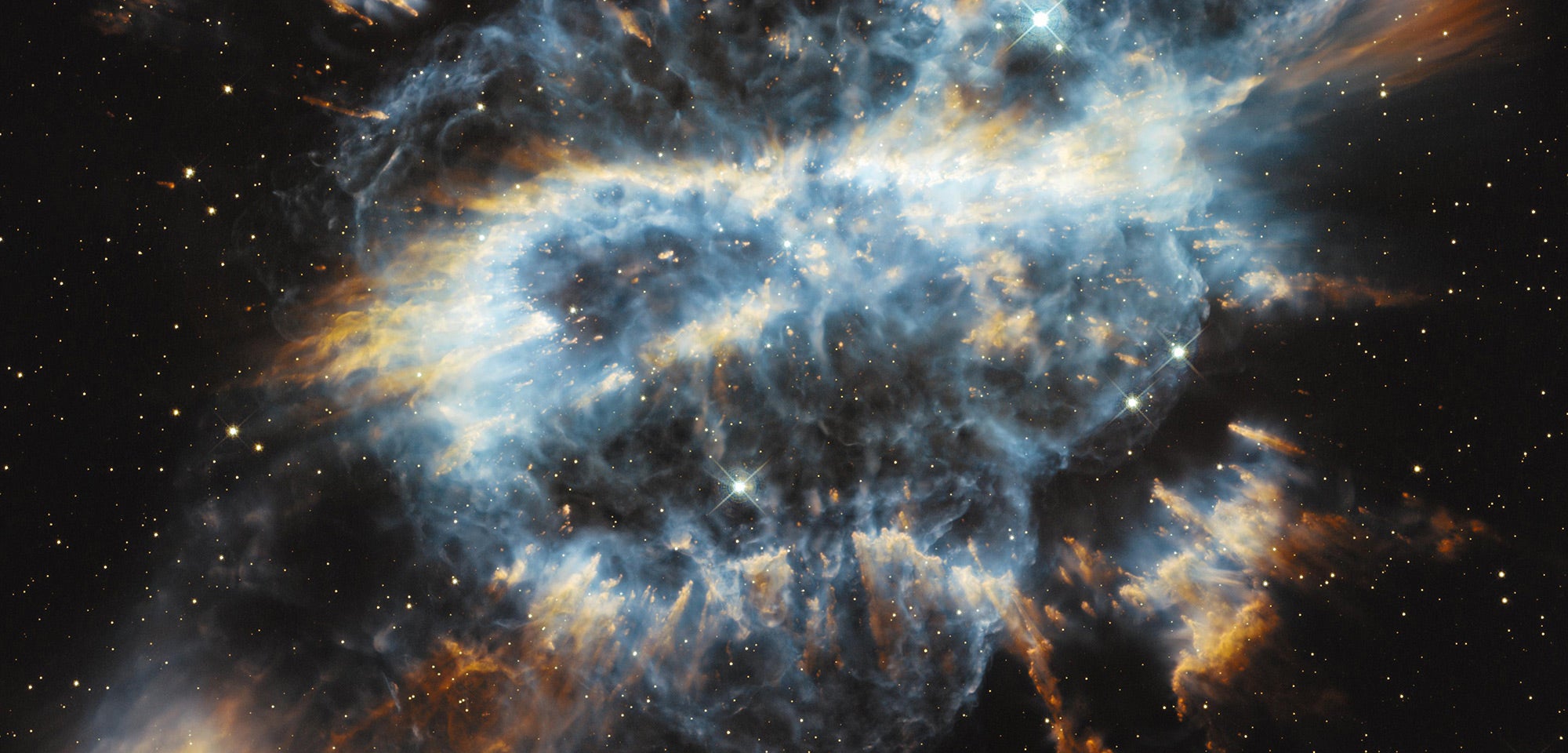
NGC 5189 is one of the more bizarre-looking planetary nebulae, appearing more like an exploding barred spiral galaxy than a shell of gas released from a dying Sun-like star. Until the 1960s, this curious object was believed to be an emission nebula. The reverse S-shape symmetry and hyper-chaotic knotty details of NGC 5189’s shells are the most puzzling morphological structures known among planetary nebulae.
NGC 5189 belongs to an extremely restricted class of these nebulae that exhibit ansae — small appendages on either side, giving the illusion of rings. But unlike other planetaries, NGC 5189 sports not two ansae, but five! NGC 5189’s shape is reminiscent of a lawn sprinkler, with matter being expelled from the star, which is wobbling as it rotates.
The bizarre structure could be a result of powerful polar outflows from an interacting binary star system, whose components orbit one another once every four days at the nebula’s core. Evidence is mounting that one of the companions is a rare low-mass Wolf-Rayet star with a mass equal to that of the Sun. This star is at an advanced stage of evolution and losing mass at a very high rate. If this star had multiple outbursts (there is evidence for at least three expanding bubbles of hot gas), each at different velocities, it would induce shock waves in the surrounding gas, creating the complex system of knots and filamentary structure we see.
You’ll find this intriguing 10th-magnitude planetary 1¾° southeast of magnitude 4.5 M Centauri. The nebula covers 2.5′ of sky, which spreads out its light, resulting in a low surface brightness. Under dark skies, a 4-inch telescope will reveal the nebula’s irregular structure, looking like a 1.5′-long knot of light about 5′ northwest of a magnitude 7.5 star. At higher magnifications, the object appears mottled and snakelike, slithering through patches of space. The object stuns when viewed through a 12-inch scope, revealing its irregularities and winding extensions.









